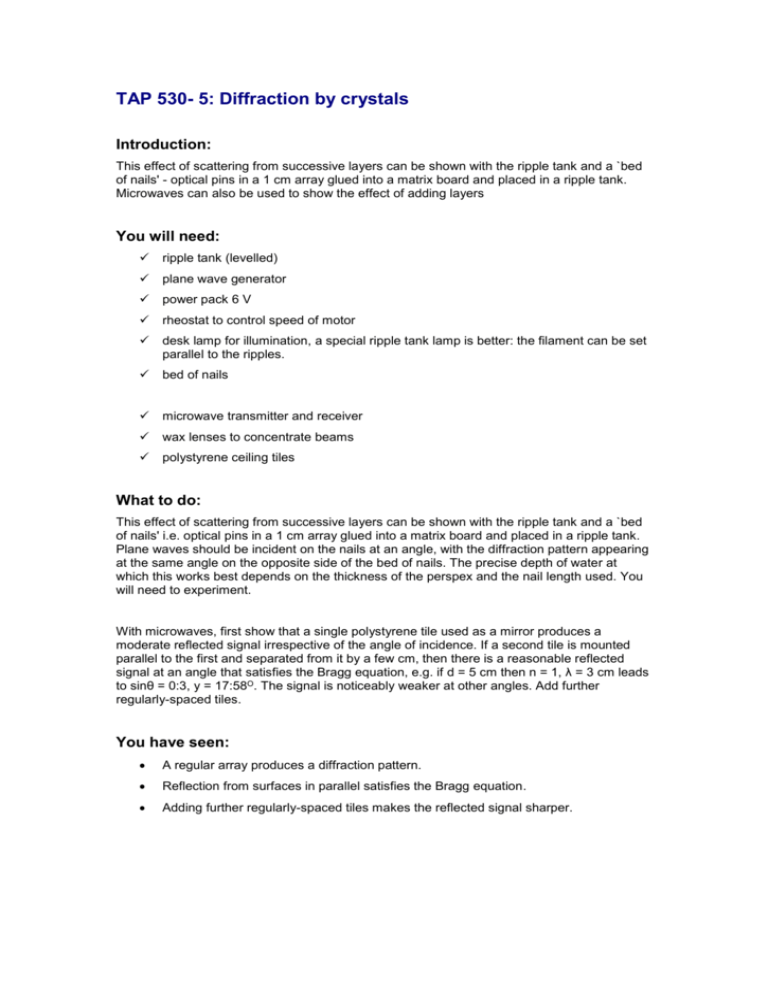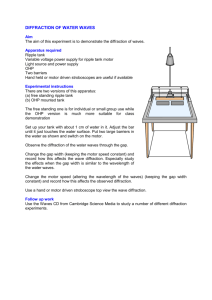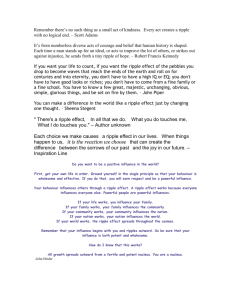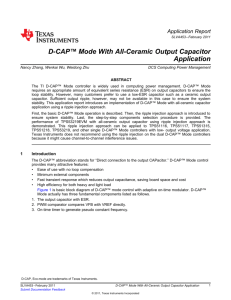TAP 530- 5: Diffraction by crystals
advertisement

TAP 530- 5: Diffraction by crystals Introduction: This effect of scattering from successive layers can be shown with the ripple tank and a `bed of nails' - optical pins in a 1 cm array glued into a matrix board and placed in a ripple tank. Microwaves can also be used to show the effect of adding layers You will need: ripple tank (levelled) plane wave generator power pack 6 V rheostat to control speed of motor desk lamp for illumination, a special ripple tank lamp is better: the filament can be set parallel to the ripples. bed of nails microwave transmitter and receiver wax lenses to concentrate beams polystyrene ceiling tiles What to do: This effect of scattering from successive layers can be shown with the ripple tank and a `bed of nails' i.e. optical pins in a 1 cm array glued into a matrix board and placed in a ripple tank. Plane waves should be incident on the nails at an angle, with the diffraction pattern appearing at the same angle on the opposite side of the bed of nails. The precise depth of water at which this works best depends on the thickness of the perspex and the nail length used. You will need to experiment. With microwaves, first show that a single polystyrene tile used as a mirror produces a moderate reflected signal irrespective of the angle of incidence. If a second tile is mounted parallel to the first and separated from it by a few cm, then there is a reasonable reflected signal at an angle that satisfies the Bragg equation, e.g. if d = 5 cm then n = 1, λ = 3 cm leads to sinθ = 0:3, y = 17:58O. The signal is noticeably weaker at other angles. Add further regularly-spaced tiles. You have seen: A regular array produces a diffraction pattern. Reflection from surfaces in parallel satisfies the Bragg equation. Adding further regularly-spaced tiles makes the reflected signal sharper. Practical advice: The microwave equipment can be set up without the wax lenses, however, they will improve results if set up correctly. Technician’s note: To make the bed of nails, use a piece of plain matrix board about 10 cm to 15 cm with optical pins glued in at approx. 1 cm intervals to create a square matrix. External reference This activity is taken from Salters Horners Advanced Physics, section DUTP, activity 17











